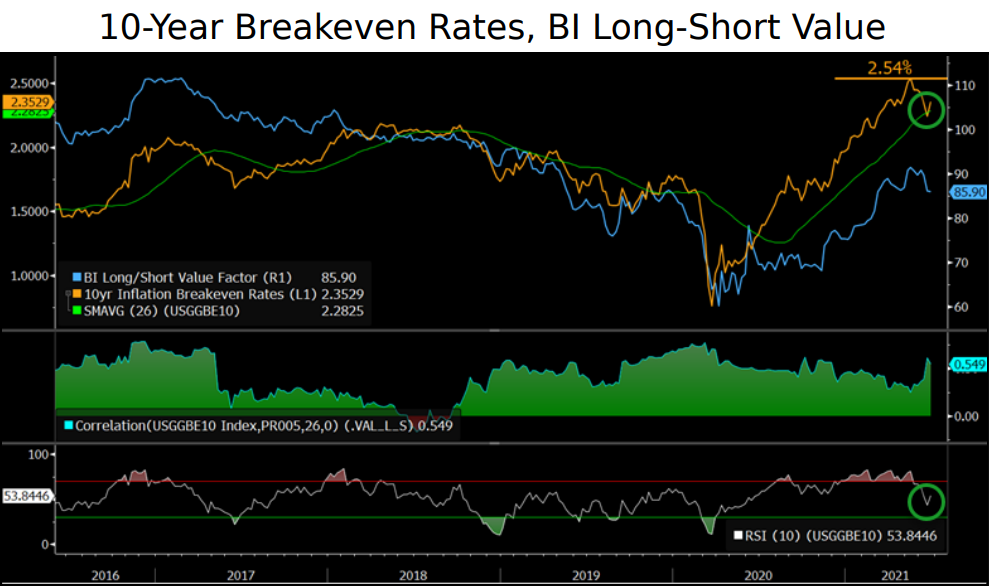Investors have pulled significant assets from financials ETFs in Europe and the US prompting questions over whether the rally in value stocks has come to an end.
Having come back into vogue since Pfizer published its vaccine results last November, the $2.1bn iShares EURO STOXX Banks 30-15 UCITS ETF (EXX1) and $758m Xtrackers MSCI USA Financials UCITS ETF (XUFN) have booked impressive returns of 29.2% and 30.9%, respectively, so far this year.
However, some of the sheen has been taken off these bright starts to 2021 with slowdowns over the past month, with EXX1 returning -4.6% while XUFN booked 0% returns over the four weeks to 2 July, according to data from ETFLogic.
Tracking this loss of momentum, EXX1 saw considerable outflows of $401m during the week to 25 June and an additional $11m outflows in the week to 2 July.
Similarly, XUFN saw an asset exodus of $246m in the week to 25 June and an additional $293m exit in the seven days ending last Friday.
Athanasios Psarofagis, ETF analyst at Bloomberg Intelligence, noted the value trade took a hit following the Federal Reserve’s hawkish announcement in June but was undecided whether this represented a blip or sign of things to come. Much like what we have seen in European ETFs, though, he highlighted the $8.9bn Financial Select Sector SPDR Fund (XLF) booking $2.4bn outflows last month.
“People want to believe in the value comeback so the allocations to it were massive (at least in ETFs) and at the first sign of any weakening this has been fast to come out,” Psarofagis said.
Steven Goldin, managing partner and co-CIO at Parala Capital, added from a macro perspective, return expectations for financials are linked to term yields – or the difference between yields on long-term treasuries and short-term treasuries or bills.
A widening term spread, Goldin noted, is normally positive for financials as they can deploy capital and earn yields substantially above their short-term financing costs.
“The widening term spread this year has meant bigger profits and bigger returns for banks,” Goldin said. “However, the term spread has tightened recently as long-term bonds rallied.
“A tighter term spread is generally associated with lower return expectations for financials and we saw global and US financials decline around 3.7% and 3.0%, respectively.”
In a similar line of thought, Gina Martin Adams, chief equity strategist at Bloomberg Intelligence, highlighted the correlation between the 10-year inflation breakeven rate and US value factor performance – with the Fed’s recent announcement dealing a blow to inflation expectations.

Goldin said the level of return from financials has softened over the last three months and that it would be reasonable to suggest some money had left the sector to seek return opportunities elsewhere.
The effects of this have not been confined to value factors though. In fact, the recent rebalancing of the iShares Edge MSCI USA Momentum Factor UCITS ETF (IUMF) placed it directly in the firing line, by performing a long-overdue rotation from growth to value.
The problem with momentum ETFs
“The financial sector has moved from being one of the lowest ranked sectors to the highest ranked sectors,” Goldin highlighted. “We have recently seen momentum as a factor turn negative as the bottom ranked sectors outperformed the top ranked sectors.”
Down but not out
Offering some hope that financials will regain their footing, Adams said inflation expectations remain in an ascent and should breakevens surpass the 2.54% high, this will act as a tailwind for value.
Goldin added the spread yield will likely widen again over time, with its level last week more than 30 points shy of its levels in March.
“What surprised investors is the speed of change as a result of inflation concerns,” Goldin said. “There is a tug-of-war of views at the moment as to what element of inflation is transient and what is structural.
“The average term spread from 1990 to present is 1.7 and we are currently at 1.4 so from that perspective it could also go higher.
“It is ultimately a business cycle variable and will expand and contract over time due to both central bank policy, the economic environment and market forces.”
Overall, Adams remains optimistic for the prospects of value sectors such as financials, saying the Fed’s role in decreasing inflation expectations and flattening the yield curve merely dazed these kinds of stocks.
“The path of inflation expectations will go a long way to determining US value stocks' future, but we believe historically wide forward valuation ratios and strong profitability remain squarely in their corner,” Adams concluded.
Todd Rosenbluth, head of ETF and mutual fund research at CFRA, also noted the reversal of the value rotation in June. And while hopeful for the sector’s resilience, he was not sure whether what we have seen is a blip, or something that is here to stay.
“In the US, many of the large banks announced sizable share buyback plans in addition to dividend hikes confirming that their fundamentals are strong despite the uncertainty caused by COVID-19,” Rosenbluth said. “We expect the sector perform in line with the broader market in the second half of 2021.”







